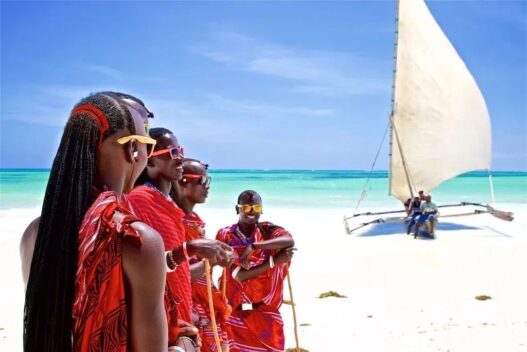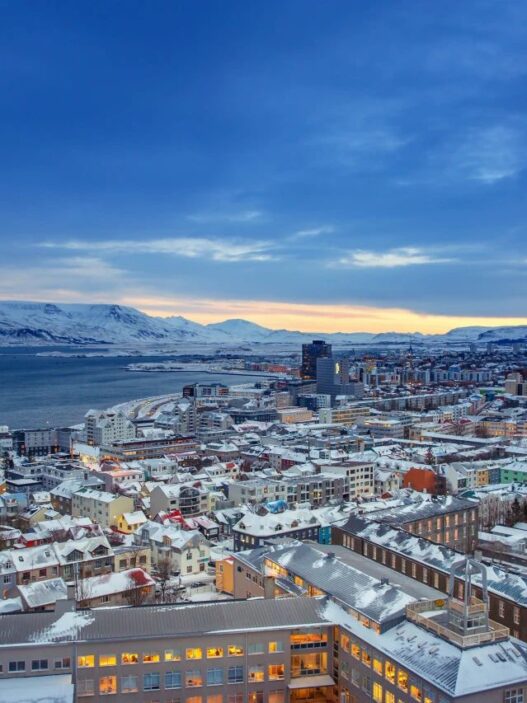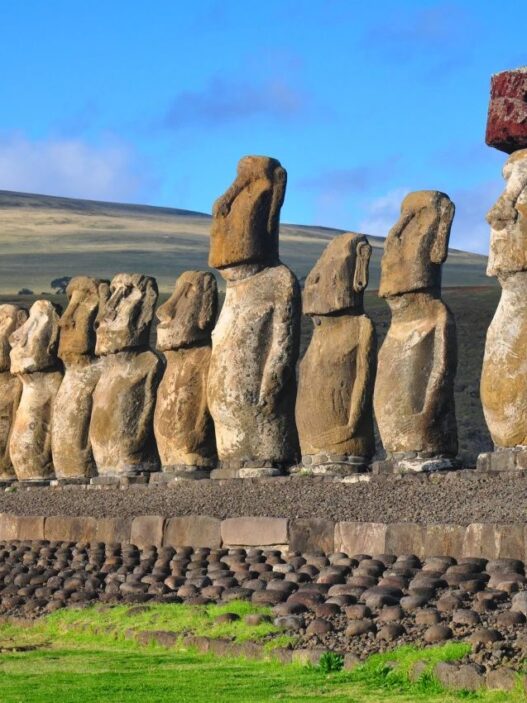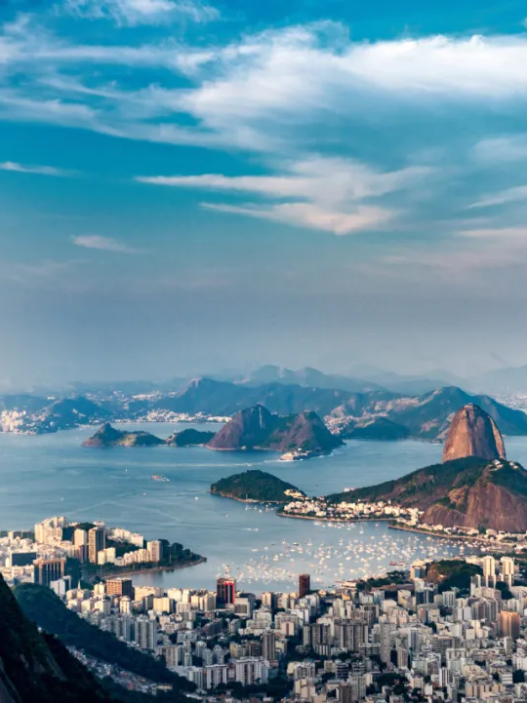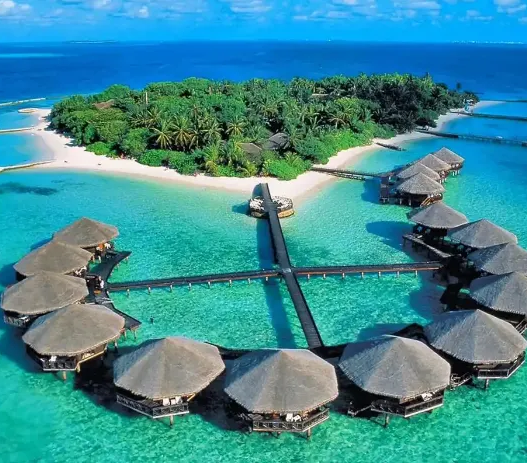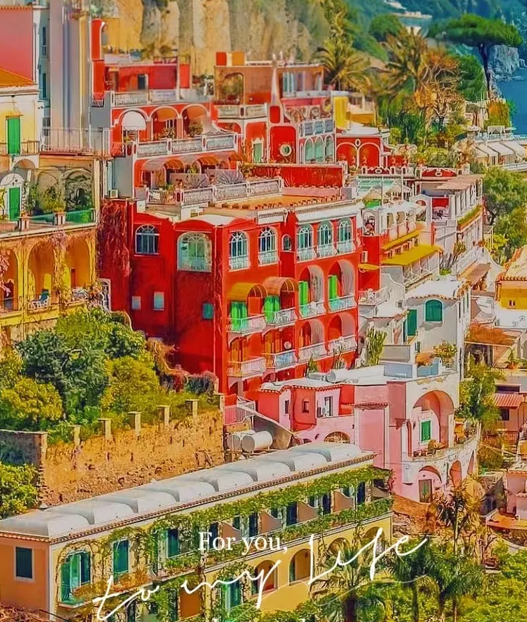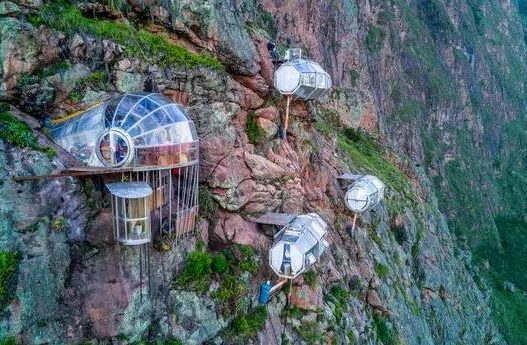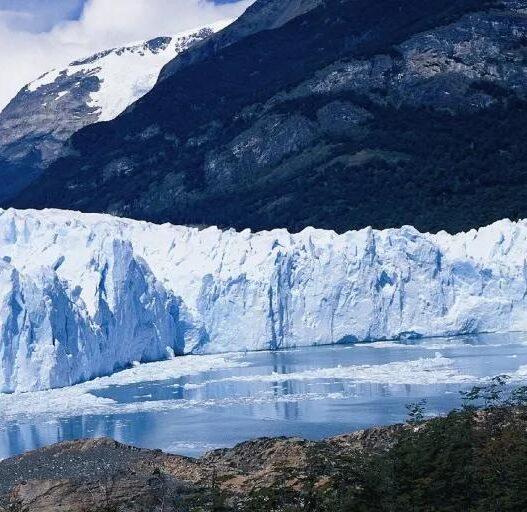In Tanzania, there’s more than just the Great Migration; there’s adventure awaiting you!
Serengeti National Park
Historically known as “the land of the Maasai,” Serengeti National Park is Tanzania’s third-largest park, suitable for visits all year round. During the Spring Festival, witness the birth of wildebeest calves; during summer and National Day holidays, observe the river crossings; and in other months, the hunting and migration scenes are still worth watching. Hot air balloon rides over the Serengeti are also an exhilarating experience.
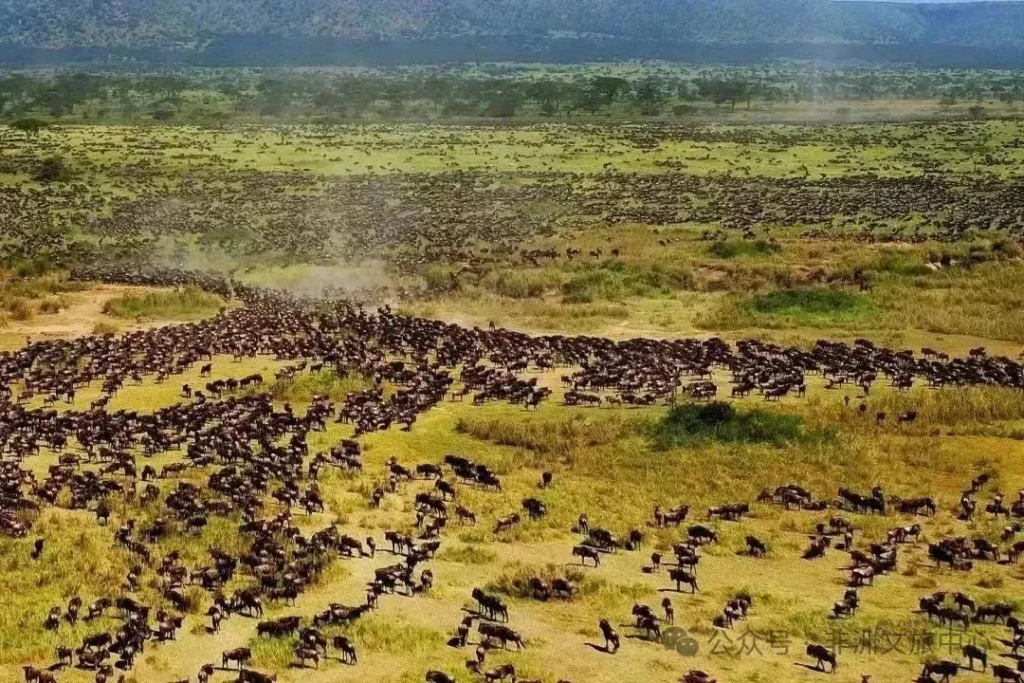
Serengeti National Park is a vast, treeless plain where millions of animals live or pass through in search of fresh pastures.
Recommendations: Go on a safari to track the Big Five of Africa; take a hot air balloon ride to view the Serengeti from above; camp by the Mara River to witness the “River of Heaven.”
Zanzibar Island

In Tanzania’s name, “Tanzania” refers to the mainland of Tanganyika, while “Zanzibar” refers to Zanzibar Island. Zanzibar, also known as Unguja Island, is Tanzania’s premier vacation destination. Staying at a beach resort, you’ll open your door to the warm, sweet breeze of the South Indian Ocean, the moist air lazily swaying between the ocean and the island.
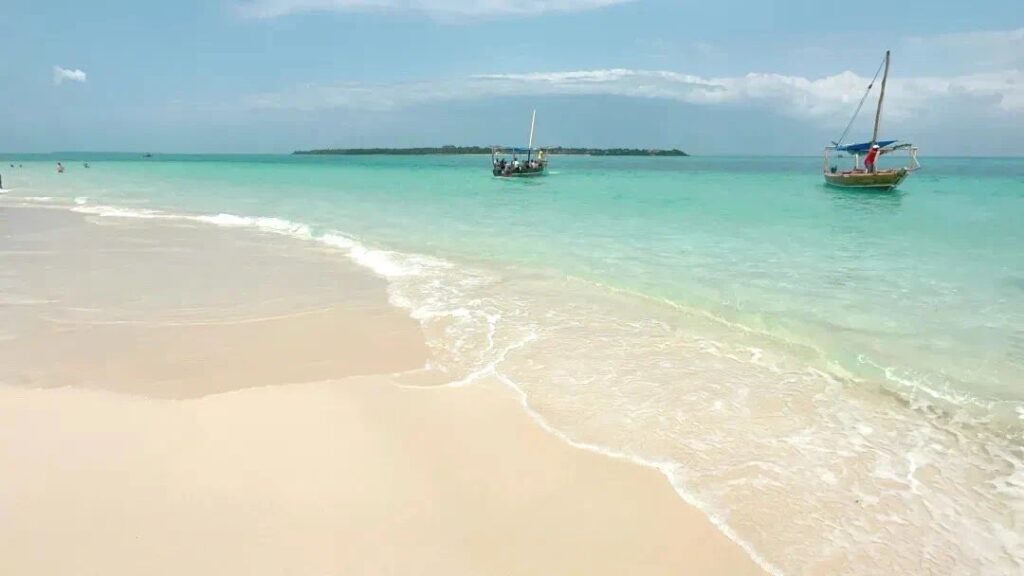
The most delightful surprise is its beaches, broad and fine. Not far from the shore, the water’s colors are clear and varied, from emerald green to Tanzanite blue, to deep azure, with distinct layers and perfect color matching.
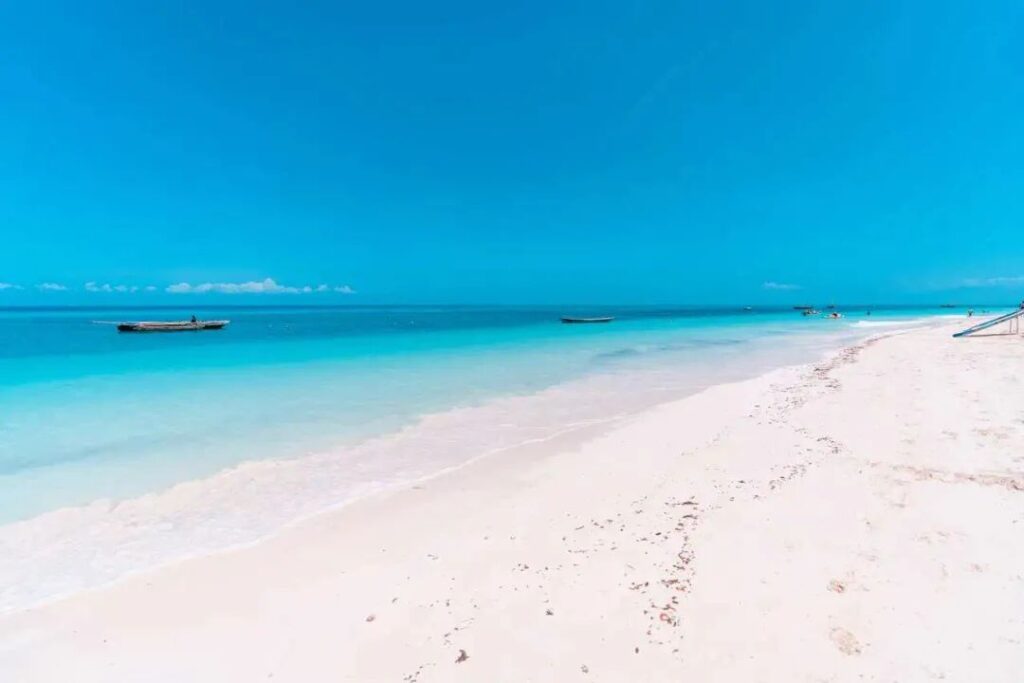
The Stone Town of Zanzibar is the old town area, with most buildings constructed in the 19th century. True to its name, the walls are almost entirely built from coral stone, which, though easily eroded, helps to keep out the heat brought by the Indian Ocean monsoons.
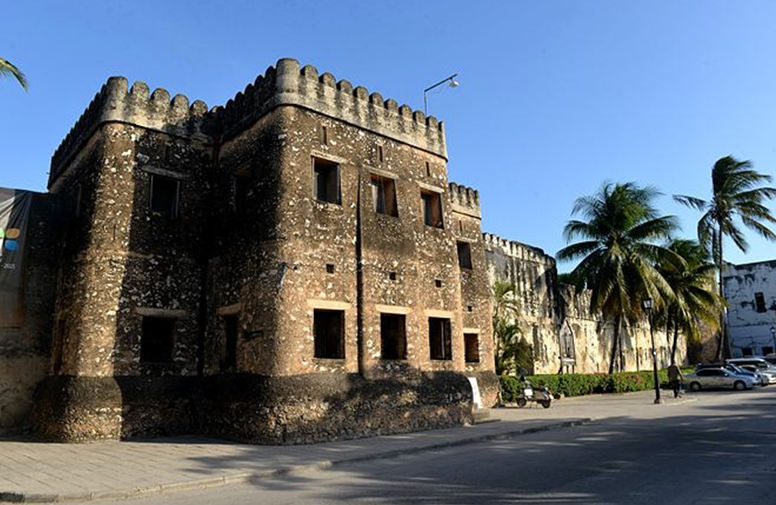
Under the equatorial sun of the Southern Hemisphere, this old town still showcases a “fusion of cultures.” It’s a blend of Islamic and Bantu cultures, with residents including locals, Arabs, Iranians, and Indians, where the classic street scene includes Muslims in long robes and small round hats.
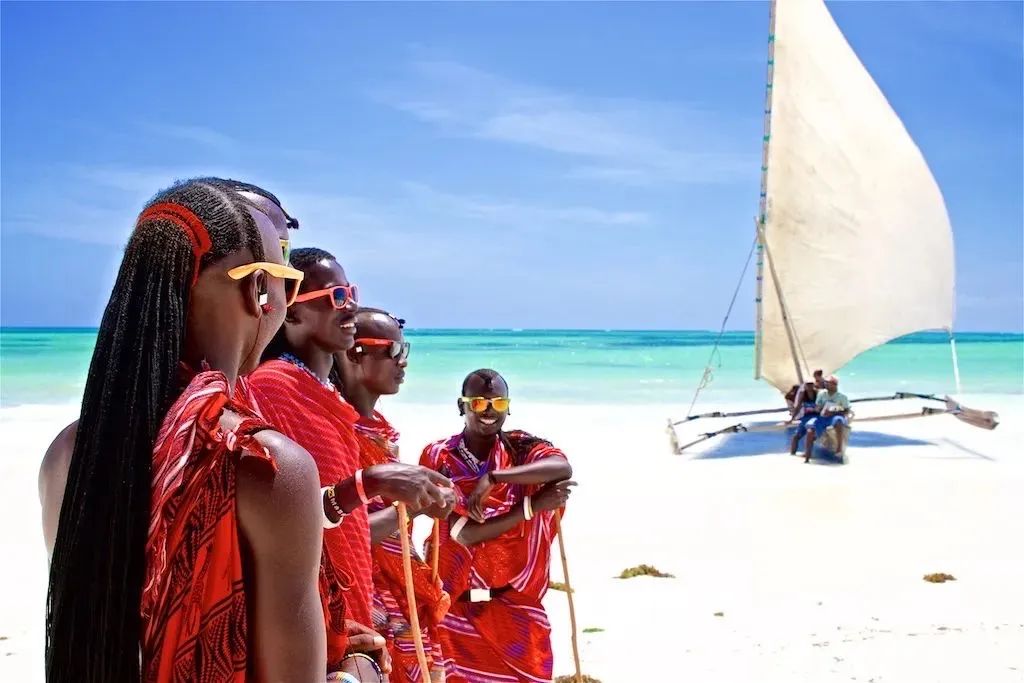
Mount Kilimanjaro
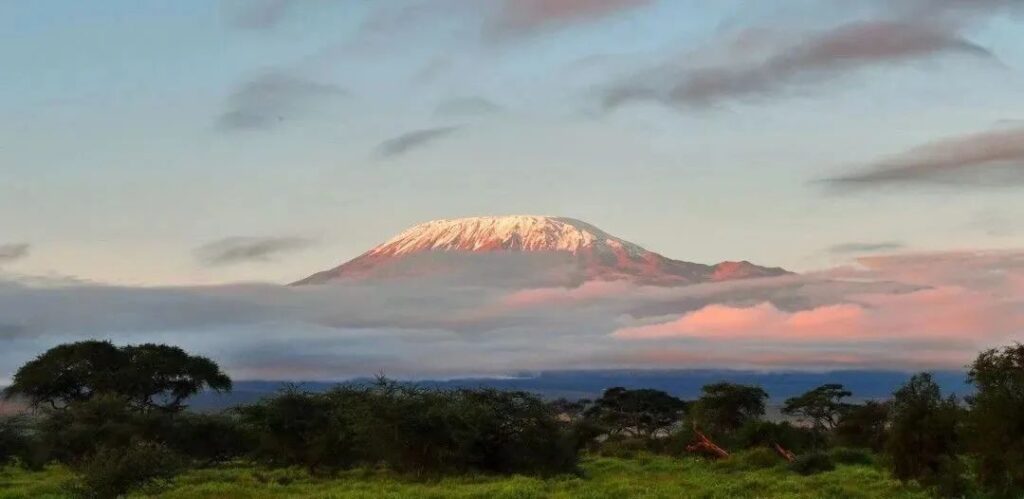
Mount Kilimanjaro is Africa’s highest peak (5,895 meters), with its highest point, Uhuru Peak, being one of the Seven Summits of the world and Tanzania’s most iconic landscape. A UNESCO World Heritage Site, Kilimanjaro was formed by volcanic activity in the Great Rift Valley over a million years ago.
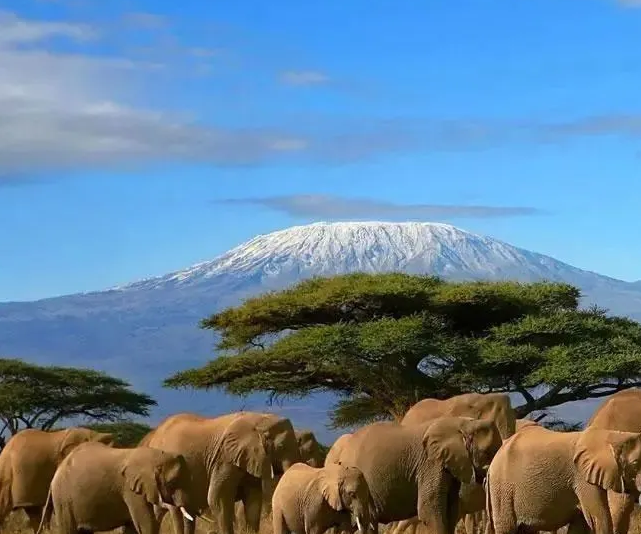
The mountain’s scenery is rich and diverse, from the lower agricultural fields to tropical rainforests and alpine meadows, up to the snow-capped summit, with different landscapes distributed according to altitude. The rainforest slopes are home to buffalo, leopards, monkeys, elephants, and antelopes, while the higher regions are the domain of numerous raptors.
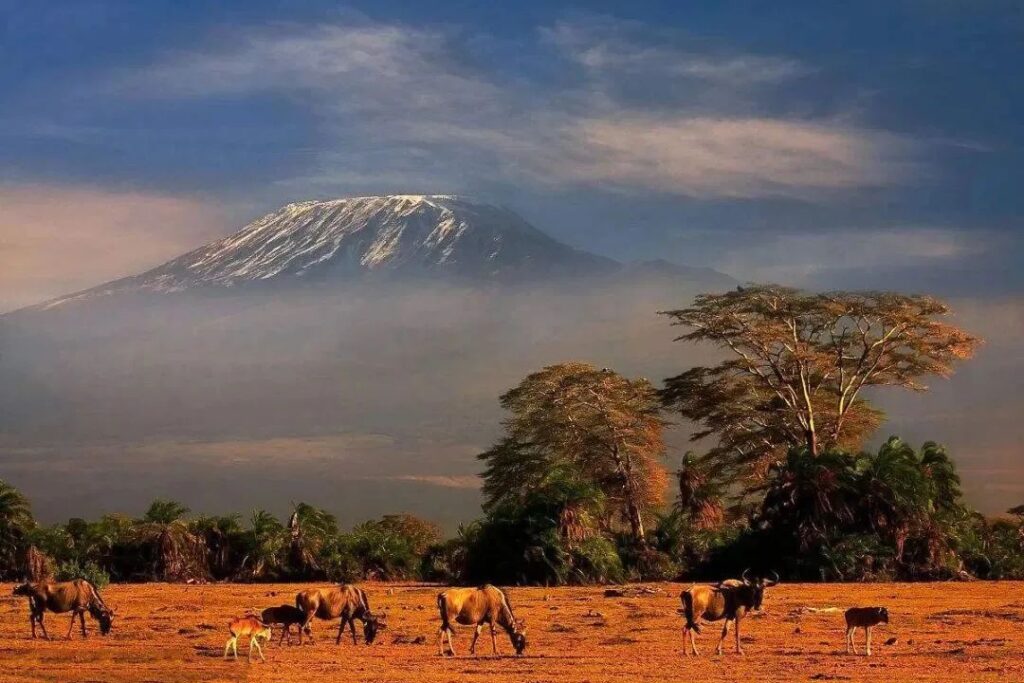
As Africa’s highest peak, Kilimanjaro boasts many distinctions; the “Everest of Africa,” “Roof of Africa,” “King of Africa,” it’s the highest peak humans can climb without external equipment. With a healthy body, even without climbing experience, reaching the summit is achievable. However, for ordinary tourists to enjoy the view of the snowy mountain is still challenging, so the government approved a plan in late 2020 to build a cable car on Kilimanjaro. If completed, it would take visitors up to an altitude of 3,700 meters to enjoy the snow-capped mountain scenery.
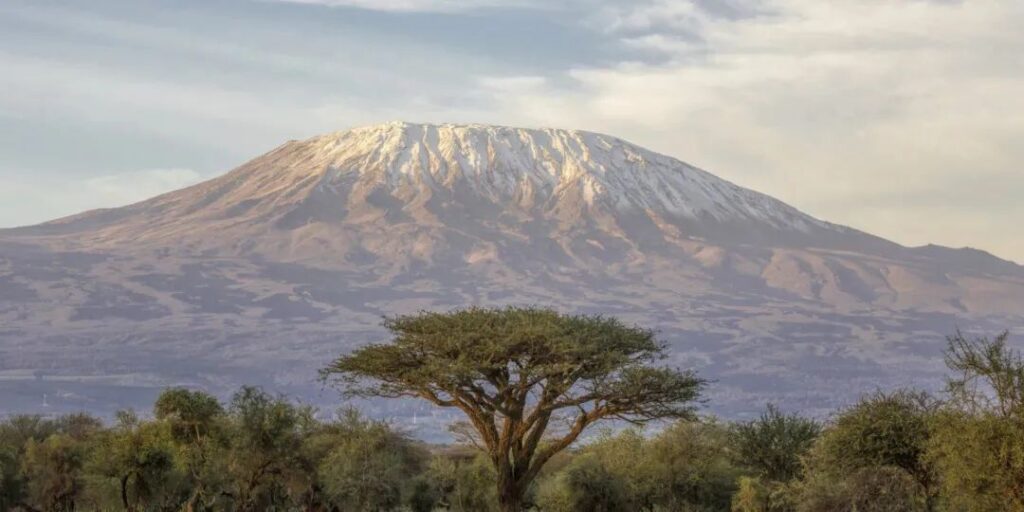
Experts say that the snow at the top of Kilimanjaro will completely disappear within ten years (some say even five!!). Some sights are truly “now or never.”
Arusha
Arusha is an international town, the starting point for safaris in northern Tanzania, and a crucial gateway for tracking wildlife.
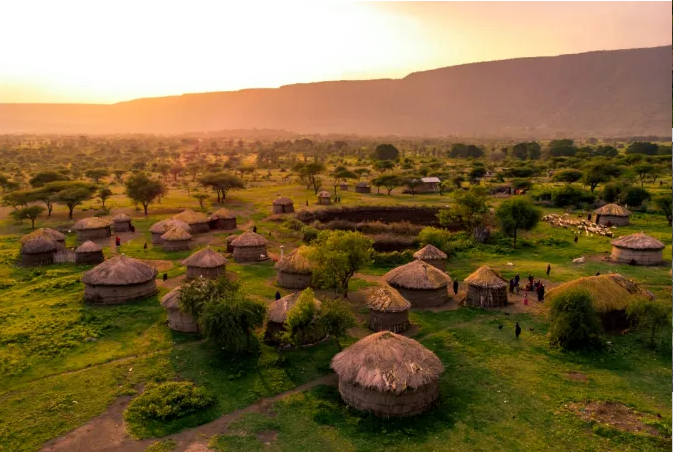
Few know that Arusha also has a national park named after the city—Arusha National Park. If time allows, it’s worth a visit. It’s not only small and beautiful but also rich in species and unique in character. Tanzania’s second-highest mountain, Mount Meru, lies within the park, and on clear days, its majestic view can be seen from the horizon. With no lions in the park, the chances of encountering leopards and hyenas are much higher. This park is also the only safari destination in northern Tanzania where black-and-white Colobus monkeys reside. Birdwatchers can also feast their eyes here.
The Gates of Arusha National Park:
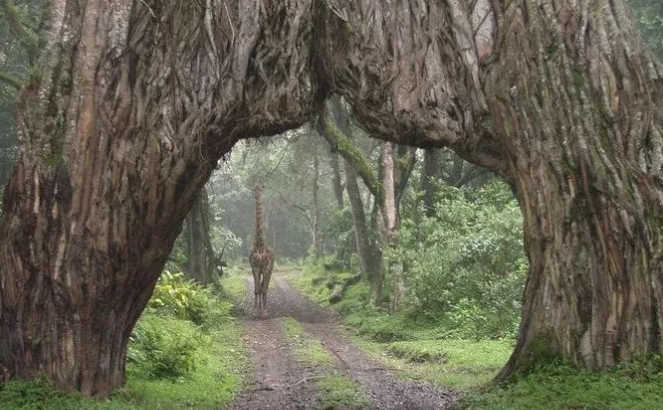
Ngorongoro Crater
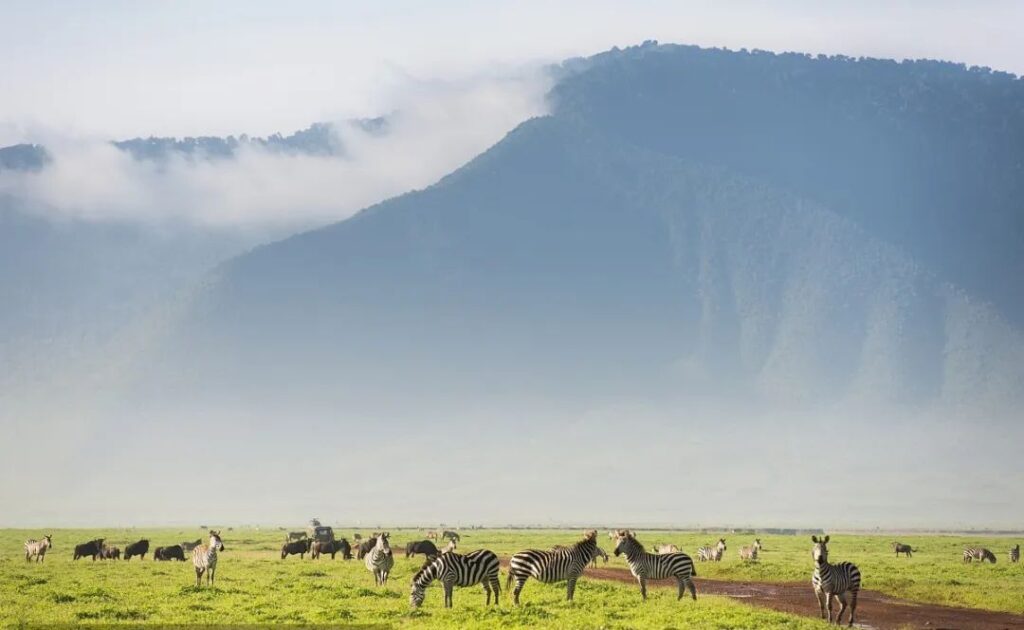
Located in northern Tanzania in the Great Rift Valley, Ngorongoro Crater is the world’s second-largest volcanic caldera and the only one where various animals live in a complete ecosystem, resembling the moon’s craters in appearance.
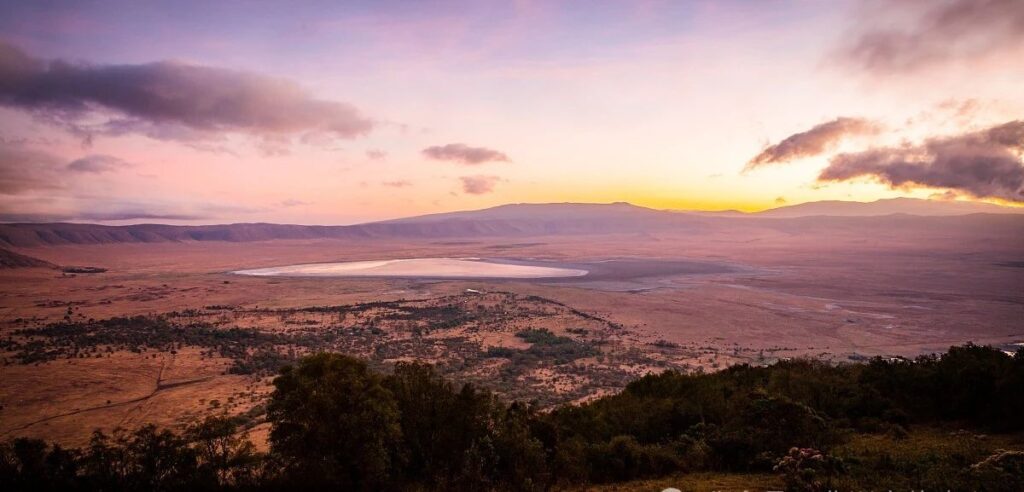
Ngorongoro Crater is one of the world’s most complete and beautiful volcanic craters. Its perfect ecosystem has made it one of the new wonders of the world, earning the title “Africa’s Eden.” It ceased erupting at least 2 million years ago and has existed for about 2.3 million years.
Tarangire National Park
Tanzania’s sixth-largest national park, covering about 2,600 square kilometers.
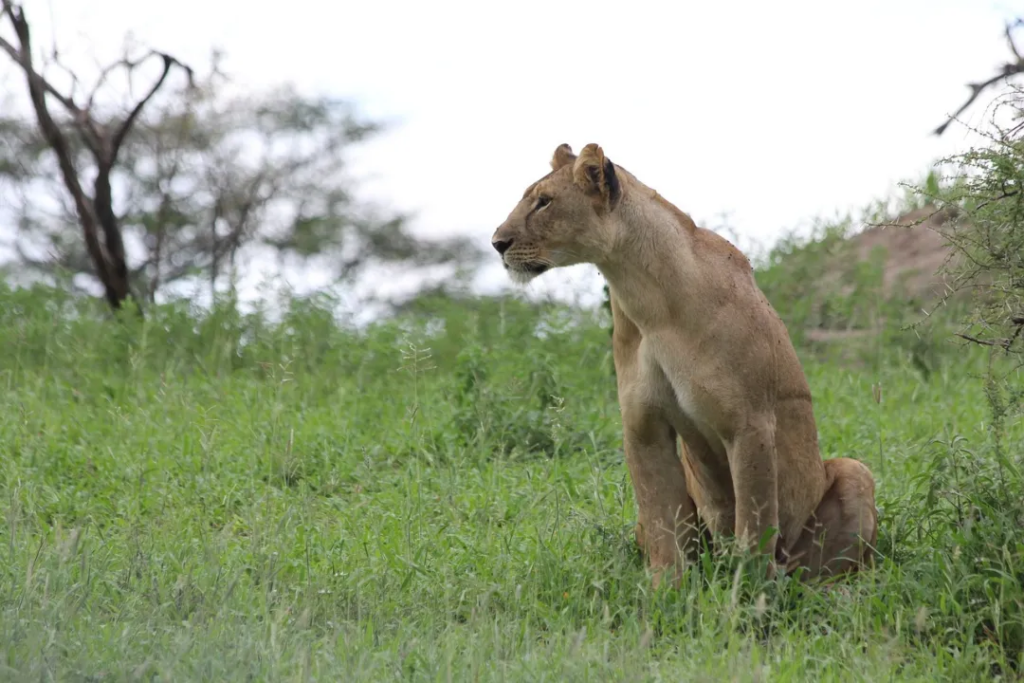
It’s named after the Tarangire River that flows through the park, the only “source of life” for animals during the dry season, attracting thousands of animals migrating from nearby Lake Manyara National Park in search of water.
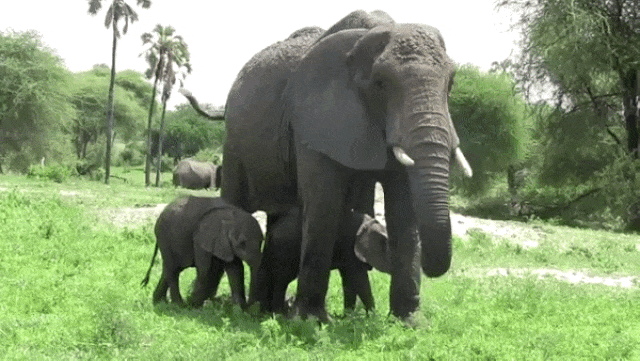
Lake Natron
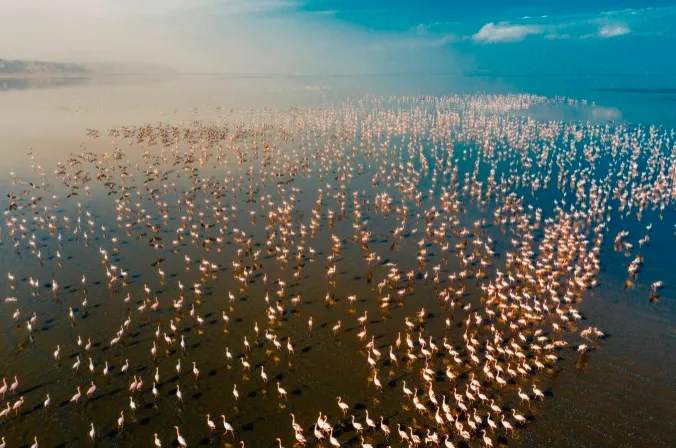
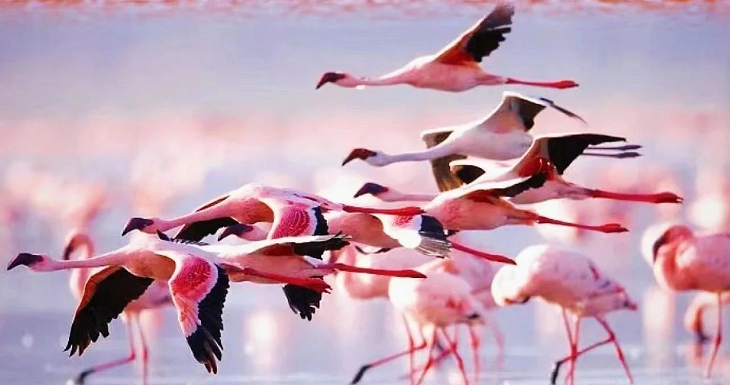
Known as the “nursery of flamingos,” Lake Natron lies on the border with Kenya, to the northeast of the Ngorongoro Conservation Area. From June to November, about 3 million flamingos gather here. (Helicopter tours for aerial photography are available at Lake Natron, which are quite expensive, billed by the hour, starting from 3 hours.)







